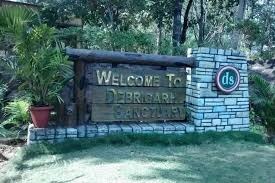Sambalpur: Eco-tourism programmes being implemented by the state government have proved rewarding as revenue from tourism activities in the Debrigarh wildlife sanctuary what with its nature camp and eco-tourism activities has earned Rs 75 lakh this year.
On the same day last year, collections from Debrigarh nature camp stood at Rs 35 lakh while revenue from camp and eco-tourism activities was Rs 53 lakh in 2018-19. However, the camp recorded the record Rs 75 lakh by January 2019-20– Rs 13 lakh more than last year.
The wildlife division has been taking several measures to explore the tourism potential of the sanctuary. This year, the Hirakud wildlife division started a number of community-managed eco-tourism activities in the sanctuary.
While the Debrigarh Jungle Safari was started in May, two new activities were added to the basket of eco-tourism packages including boating in November and soft-trekking in December. The sanctuary also facilitated paid nature tours for schools and colleges.
Rs 10.6 lakh has been collected from these activities so far. In the nature camp, there are six double-bed water front cottages, besides eight double bed rooms named Bison Block and one four-bed dormitory which can be booked through the sanctuary’s website. Offline booking is also available at the sanctuary. Earlier, booking of cottages was managed by the forest department, but now OTDC is authorized for the same.
On the other hand the authorities have decided to launch boathouse service in the water reservoir inside the sanctuary.
A boathouse is a building especially designed for the storage of boats, normally smaller craft to attract tourists. These are typically located on open water, such as on a river. Often the boats stored are rowing boats. Other boats such as punts or small motor boats may also be stored. The boathouse may also include a restaurant, a bar, and other leisure facilities.
The wildlife sanctuary in Sambalpur district covers a total area of 353 sq km. It is situated near Hirakud Dam. The sanctuary is an important site for in situ conservation of wildlife and its habitat in the state.
This is home to an immense array of biodiversities comprising over 40 species of mammals, 234 species of birds, 41 species of reptiles, 12 species of amphibians, 42 species of fishes, 39 species of odonates, 85 species of butterflies and 38 species of spiders.
The sanctuary is fringed on the east and north by the huge man-made water body of Hirakud reservoir, thus forming one of the select few sanctuaries in the state supporting both terrestrial and aquatic biodiversity which attracts a significant number of migratory waterfowls during winter. The sanctuary is home to over 250 plant species, many of which have ethno-botanical and medicinal values.
